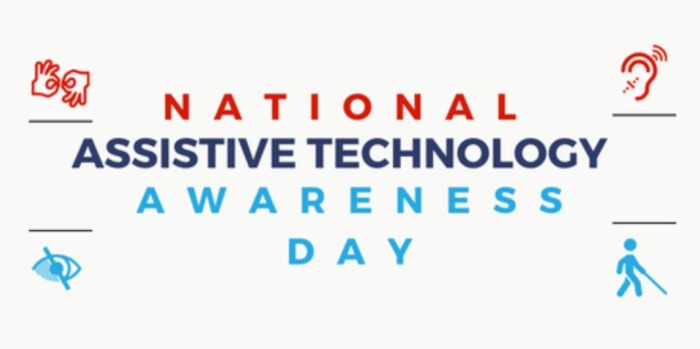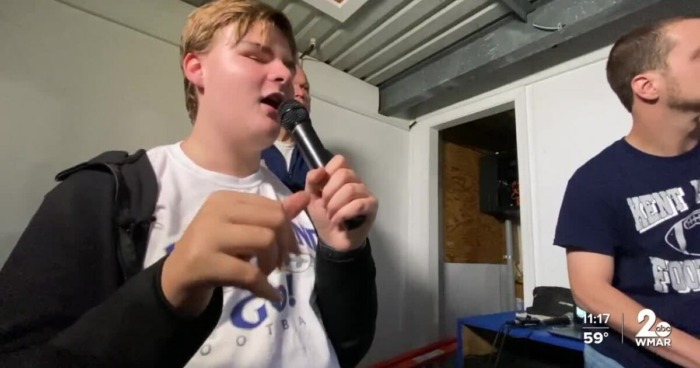
This year, the Association of Assistive Technology Act Programs (ATAP) rang in the sixth annual National Assistive Technology Awareness Day (April 17) with a briefing on Capitol Hill to address the importance of assistive technology and the federal funds needed to acquire it for such programs as the INDATA Project.
In his remarks to honor the day, Pennsylvania Congressman Glenn Thompson drew from his professional background to highlight the diversity of lives touched by AT:
“Having spent nearly three decades as a therapist, rehabilitation services manager and a licensed nursing home administrator before coming to Congress, I have a personal understanding of the challenges facing those who require assistive technology. Whether it’s a veteran dealing with service-related injuries, children with autism, an individual diagnosed with debilitating cancer, or adults with cerebral palsy, the bottom line is: These technologies make people’s lives better.”
ATAP’s Capitol Hill briefing went on to explore some of these AT-improved lives through a panel discussion with three AT champions.
Bridging Gaps Across Generations with AT
Prior to the panel, Joan Green delivered the presentation, “Why is Assistive Technology So Important,” in which she talked about serving as a speech-language pathologist for 37 years. Green envisioned the future of AT way back in the tech boom of the late 1980s and early ’90s. In 1986, she worked at an inpatient adult rehabilitation setting, providing caregiver support and home therapy on the side.
“Although this was when I first saw the potential of using computers to help stroke survivors who had aphasia and head injury survivors in need of cognitive retraining, I came to realize that the technology just wasn’t there,” Green says in her website bio. “Online speech therapy at home and the use of affordable assistive technology such as speech recognition software, touch screens and mobile devices that were able to speak aloud were still far in the future. But I never gave up on the idea.”
In 1992, Green founded Innovative Speech Therapy, a private speech-language pathology practice with an outpatient center featuring many types of assistive devices and computer software. Now, thanks to virtual platforms, Green can work with people all over the world.
Green shares ATAP’s mission of furthering the access and use of AT through the ElderTech Advisor Network, which she formed in 2022 to not only improve tech literacy among seniors but to train specialists on how to integrate this technology into senior living communities and programs.

Panelist speaker Tyler Huber represents the other end of the age spectrum. A 15-year-old student of the Maryland School for the Blind, Huber comes from Queen Anne’s County public schools, where he has served as an announcer for Kent Island High School’s junior varsity football games. Born with the same condition as musician Stevie Wonder — Retinopathy of Prematurity (ROP) — Huber, like Wonder, learned to confidently navigate the world through his voice. Fans flock to him at football games, and he’s even been on the local news.
Like Huber, panelist Dominique Sessa is a local celebrity in her hometown as well. Earlier this year, she was crowned Ms. Wheelchair Maryland 2024, and she’s traveled throughout the state advocating for inclusion and equity for all people with disabilities.

When she was 17, Sessa established The Girl in the Pink Wheelchair initiative to connect to the disability community and raise awareness of AT. She also serves the state as a Commissioner on the Maryland Commission on Disabilities and the Chairwoman of the Maryland Assistive Technology Loan Program Board. During her community service, she helped ensure that Disability Awareness Month is recognized by her native city of Salisbury, and she was honored as the recipient of the Salisbury Human Rights Award. Sessa will be competing for Ms. Wheelchair America this summer.
Empowering Movement Toward the Future
These three panelists are proof of AT’s power to make people’s lives better. Devices and software helped Joan Green build a business. A microphone and recording equipment helped Tyler Huber find his radio voice. A power wheelchair and communication software helped Dominique Sessa travel across Maryland and advocate for fellow citizens with disabilities.
In her presentation, Sessa spoke about the most urgent issue of National Assistive Technology Awareness Day — funding. This year, ATAP and the Consortium for Constituents with Disabilities (CCD) recommended that Congress bump funding for the AT Act from $38 million to $60 million.
As Sessa wrote on her blog following the Capitol Hill briefing: “As the Chair of Maryland’s Technology Loan Program Board, I understand the significance of funding our AT programs from serving and being disabled myself. If it weren’t for resources like Maryland’s AT Loan Program, most disabled individuals in the state could not get loans. Twenty-two percent of Marylanders have a disability. In 2021, almost 25 percent of people with disabilities were living below the poverty level. Disabled people should be able to access the things that they need to live a better quality of life. They deserve access to AT.”
For more information about ATAP’s National Assistive Technology Awareness Day efforts, click here.

Thank you so much for sharing my speech and information about myself!
Most of all— thank you for highlighting the importance of AT Awareness Day, as well as how crucial these programs are. I was lucky to be able to attend this briefing, especially with such strong fellow advocates!
Thank you for bringing attention to the significance of AT Awareness Day and the necessity of these programmes. I was fortunate to be able to attend this briefing, especially with such powerful advocates as myself!